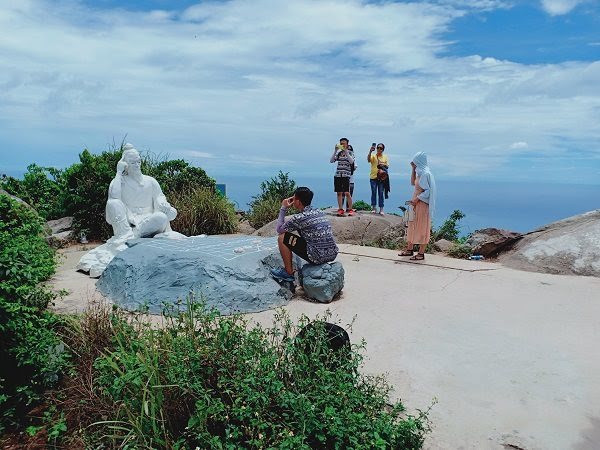
After nearly two years of scrutiny, the Government Inspectorate last Friday released its inspection findings in connection with investment projects on the peninsula.
Before the inspection was launched, the Danang government had approved a total of 18 tourism and resort projects covering more than 1,200 hectares on the Son Tra Peninsula between 2003 and 2013. These projects were licensed to build 1,920 villas, 24 bungalows and 306 hotels, offering a total of 5,600 rooms.
According to the Government Inspectorate, nine projects encroached on more than 163 hectares of natural forestland without a proviso for managing and protecting it.
Of the 18 projects, the city government only sought feedback from the Ministry of National Defense for two, and only one received the go-ahead.
However, local authorities still assigned and leased land for an investor to execute the second project despite not having an official answer from the ministry.
Still worse, the 16 remaining projects were licensed without the knowledge of the ministry. Seven of them infringed regulations on national defense and security, and three had no investment files.
City authorities also failed to appraise their land use in accordance with prevailing regulations.
Located in Tho Quang Ward of Son Tra District in Danang, the peninsula covers 4,439 hectares and is at an average altitude of 350 meters, with its peak at some 700 meters.
The peninsula has a natural forest linked with marine and urban areas and boasts a rich ecosystem as it is home to a number of endangered species, including the red-shanked douc, a species of the primate family. Zoned as a national tourist area, it is also of considerable importance to national defense and security.
Son Tra Peninsula was in the spotlight in 2017 when news of the illegal construction of 40 villas there broke and the Danang Tourism Association called for the central Government to protect the peninsula from rampant tourism property development.
At the time of the inspection, the city government had yet to approve a master plan for the conservation and sustainable development of Son Tra Nature Reserve.
Also, local authorities did not carry out any overall biodiversity surveys and assessments or prepare any reports on its status. Inspectors noted that these failures could make it difficult to manage, protect and develop the local biodiversity.
The Government inspectors in their conclusion found that the city government did not set any official prices for leasing and transferring plots of land on the peninsula, granted preferential land prices in violation of the law and did not impose fines on investors who made late payments.
The watchdog alleged that the concerned leaders of the Danang government, its departments and Son Tra District had not conformed to regulations on land management, the environment, forest protection and development, national defense and security, investment and construction.
They also failed to adequately inspect and supervise the 18 projects. Consequently, they could not handle the violations in a timely manner.
Meanwhile, the investors for some projects broke regulations on land, investment, construction and the environment, among others.
For instance, they began work on their projects without seeking construction licenses and, in some cases, failed to file environmental impact reports.
Back in 2017, Danang put on hold a national tourism plan, signed by Deputy Prime Minister Vu Duc Dam in November 2016 for the Son Tra Peninsula, in the face of fierce public opposition.
The plan applied tourism development zoning to more than 1,000 hectares out of the peninsula’s total natural area of 4,439 hectares.
Following the release of the plan, the Danang Tourism Association urged the central Government and relevant agencies to maintain the status quo on the peninsula; otherwise its ecosystem would be at risk.
The association suggested there be no more construction on the peninsula since the downtown area already has enough hotel rooms to cater to visitors.
Local tourism data indicated that more than 5.1 million tourists visited Danang between January and September this year, up nearly 20% from a year earlier.

















